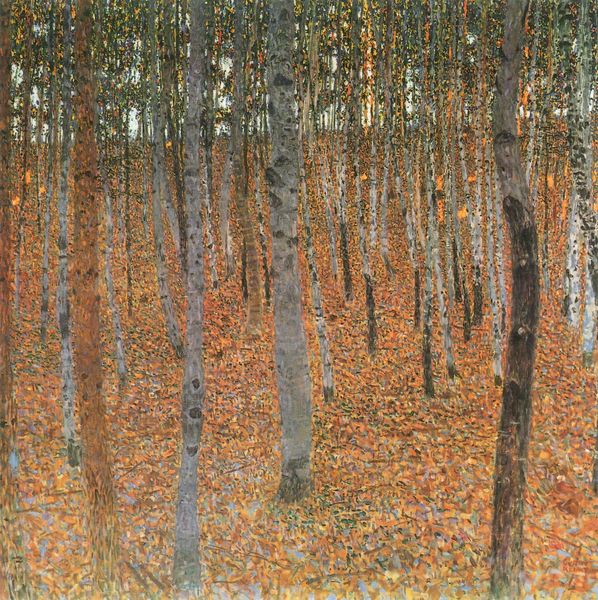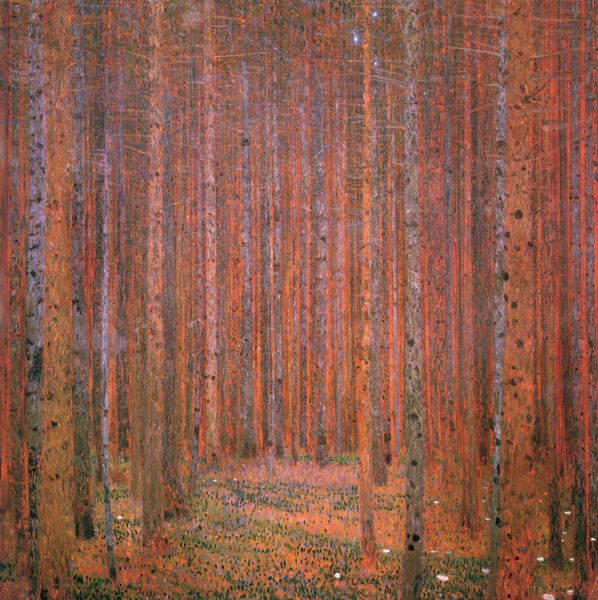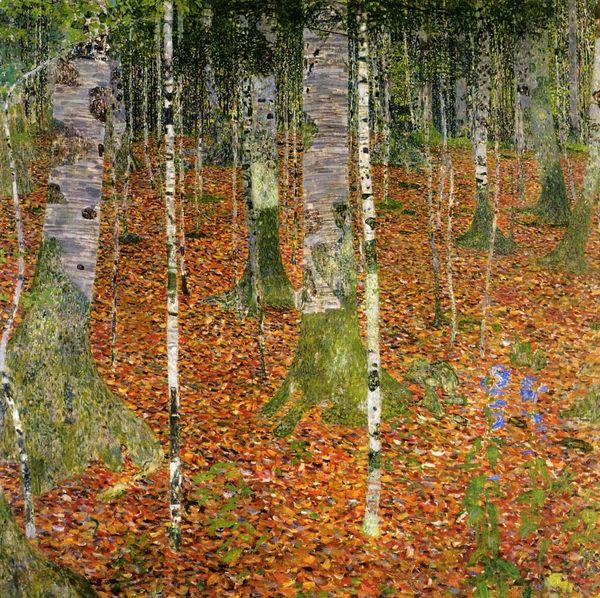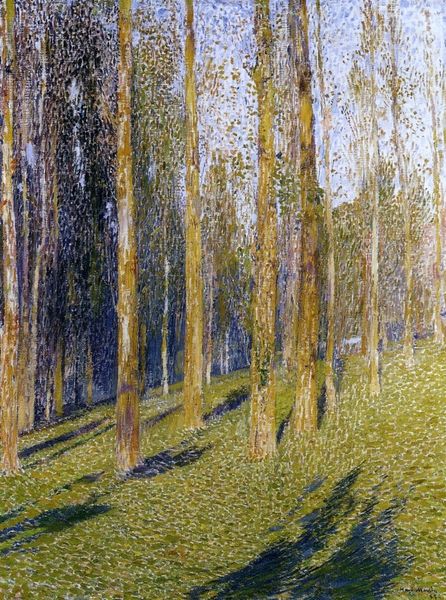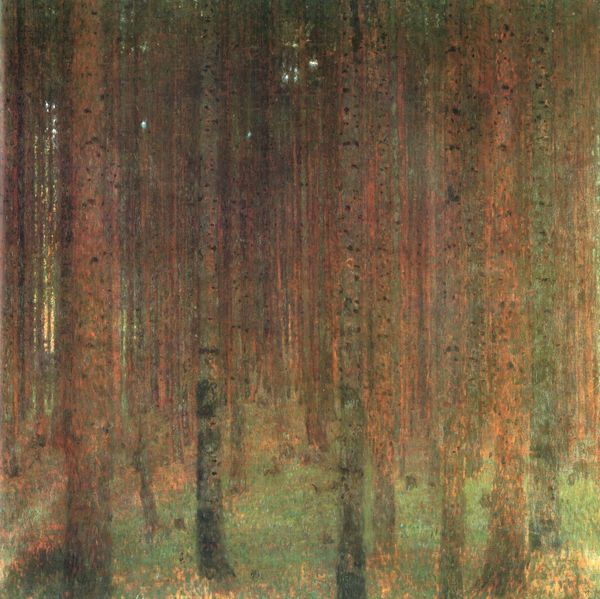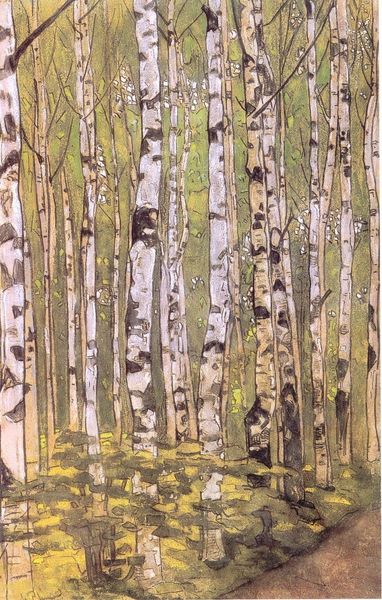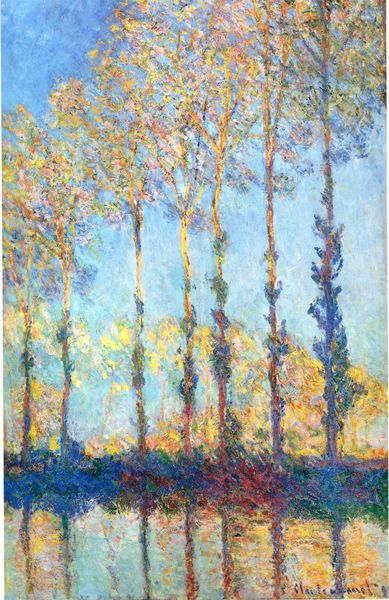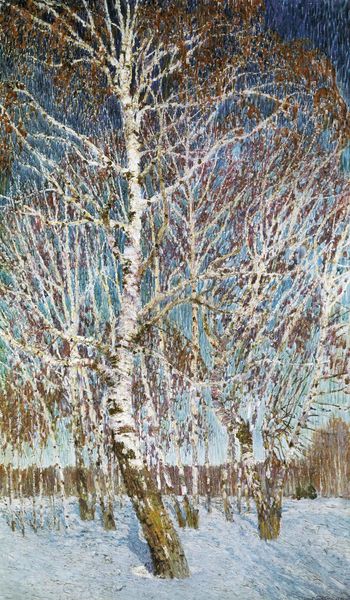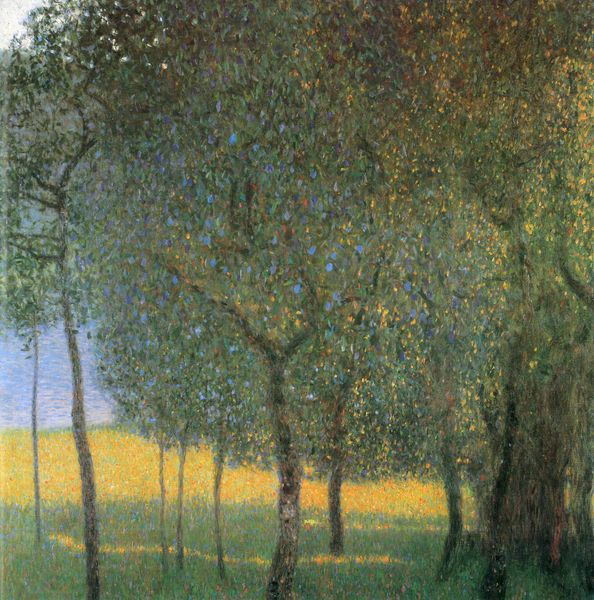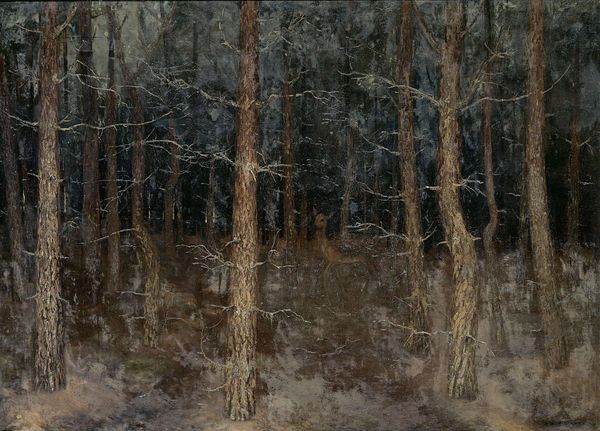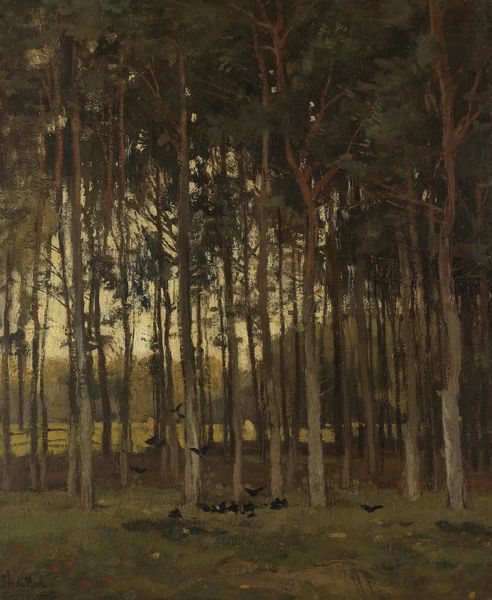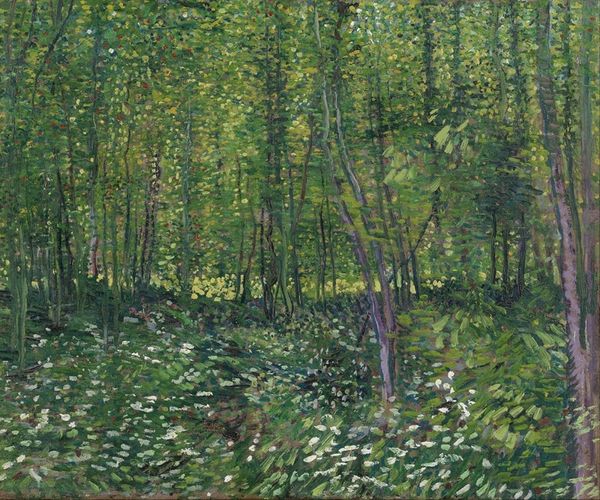
Dimensions: 100 x 100 cm
Copyright: Public domain
Editor: Here we have Gustav Klimt's "Buchenhain," painted in 1902 with oil paint. It depicts a forest scene, but it feels so...still. Almost claustrophobic. What do you see in this piece? Curator: I see a coded message, a critique veiled beneath the surface of landscape. Klimt painted this during the Vienna Secession, a time of great societal upheaval. Forests in art often represent places of refuge but also danger. Do you think this one provides refuge? Editor: Not really. The trees are so tightly packed, it almost feels like they're closing in. And the colors are muted, almost gray. Curator: Exactly. Consider the industrial revolution's impact; anxieties about nature being consumed are ever-present in Klimt's work. Think about the patterns in this artwork, how the trees echo one another, they appear more and more like ornamental patterning and less like a natural wood. This is part of Vienna’s unique contribution to Symbolism. Does that change how you see the painting? Editor: Definitely. It makes me think about how industrialization affected people's connection to the natural world. Like, it’s not really about trees, but about our relationship with them, a constructed view? Curator: Precisely. And what is that saying, especially in an imperialist setting such as Vienna? Remember also Klimt's tendency toward portraying nature using female allegory...How could that layer complicate our viewing? Editor: Wow, that’s… a lot to consider. I hadn’t thought about the gendered lens through which nature is often perceived. Curator: Art becomes more meaningful when you understand the cultural conversation that it is part of! Editor: This piece is way more complex than I originally thought! Curator: Agreed!
Comments
No comments
Be the first to comment and join the conversation on the ultimate creative platform.
